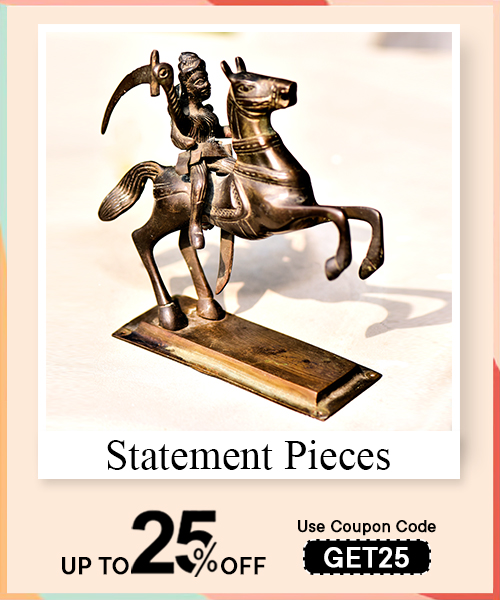Krishna Janmashtami, or Janmashtami, is a vibrant and joyous festival that fills the Hindu calendar with colorful celebrations. It marks the auspicious occasion of the birth of Lord Krishna, the eighth incarnation of Vishnu. Celebrated with great enthusiasm in all the numerous regions of India and the Indian communities worldwide, this festival is a jubilant expression of cultural, religious, and societal aspects. In this article, we delve deeper into the meaning behind the practices and festivals of Janmashtami, inviting you to join in the excitement and learn more about this significant event filled with joy and vibrancy.
For 2025, Janmashtami falls on Saturday, August 16. The timing for the main puja, or Nishita Kal, varies based on lunar calculations but generally occurs around midnight. Devotees should consult local temple schedules and astrologers for precise timings related to the Ashtami Tithi and Rohini Nakshatra.
The significance of Janmashtami is marking the birth of Lord Krishna, who symbolizes divine wisdom, love, and righteousness. Rejecting earthly reproduction in the royal palace, the holy couple Devaki and Vasudeva welcomed their beloved deity Krishna when he was born in the prison cell on the eve of Ashtami of Bhadrapada (August-September). He was to end the despotic rule of King Kamsa, thus posing a threat to the state of equilibrium or the balance sought to be imposed by maintainers of Dharma.
Read More:Ganesh Chaturthi 2025:Puja Vidhi, How to Celebrate, Story and Sthapana
Krishna and narrations of his life, especially those in the Bhagavad Gita, encapsulate Hinduism’s tenets. The Bhagavad Gita is a prominent Hindu scripture that focuses on the dos and don’ts, virtues, duties, devotion, and spirituality between the God Krishna and Prince Arjuna. By revealing his divine exploits and performing the duty of guide and protector, the Hindu people liked Krishna.
Janmashtami is celebrated over two days, reflecting the complexity and richness of its significance:
- Day 1: The first day of celebrations includes fasting, special prayers, and decorating homes and temples in anticipation of Krishna’s birth.
- Day 2: The main events occur on the second day, including the midnight vigil (Nishita Kal), during which Krishna's birth is commemorated with grand ceremonies and rituals.
This two-day celebration allows devotees ample time to prepare and participate in various religious activities and festivities, reflecting their devotion and reverence for Lord Krishna. It also fosters a sense of unity and community as devotees come together to celebrate this joyous occasion, making everyone feel connected and part of a larger whole.
Fasting is a crucial part of Janmashtami. Devotees may observe a nirjala (waterless) or falahaar (fruit-based) fast. They break their fast only after the Ashtami Tithi (the eighth day) and Rohini Nakshatra (a lunar constellation) have passed, late at night or early the following day.
Another important tradition is the midnight vigil or ratri Jagran. Devotees stay awake to celebrate the exact time of Krishna’s birth. They sing bhajans (devotional songs) and kirtans (hymns) to create a spiritually uplifting atmosphere.
Homes and temples are beautifully decorated for Janmashtami. Decorations often include:
- Floral Garlands: Homes and temples are adorned with vibrant flower garlands.
- Krishna’s Shrine: Idols of Krishna (laddu gopal, Thakur ji) are artistically decorated with clothes, ornaments, and flowers.
- Footprints: Devotees draw small footprints leading to their homes to symbolize Krishna’s divine arrival.
Read More:Haryali Teej: Celebrating the Green Festival of Shravan with Tradition and Devotion
Dahi Handi is one of Janmashtami's most exciting and energetic events. This tradition celebrates Krishna’s playful nature as a butter thief. An earthen pot (handi) filled with curd, butter, and other treats is hung high up, and teams of people form human pyramids to reach and break the pot. This event displays skill and teamwork and symbolizes overcoming obstacles and the victory of good over evil, making it a joyous occasion that brings communities together. The breaking of the pot is a reenactment of Krishna's childhood antics, and the treats inside symbolize the sweetness of his teachings.
Cultural performances like Ras Leela are integral to the Janmashtami celebrations and offer a profound spiritual experience. Ras Leela is a dramatic reenactment of Krishna’s playful and romantic exploits with Radha and the gopis (cowherd girls) of Vrindavan. These performances, which involve dance and drama, captivate audiences and convey the profound spiritual essence of Krishna’s life and teachings, leaving the audience feeling inspired and spiritually uplifted. They also serve as a means of cultural preservation and community bonding.

Janmashtami is a festival with historical and spiritual significance deeply rooted in Hindu tradition. It celebrates Krishna's life, a whole of miracles, divine plays, and profound teachings to remind devotees of the values of righteousness, devotion, and love. The festival also serves as a reminder of Krishna's teachings in the Bhagavad Gita, which emphasize duty, passion, and the path to spiritual liberation. Understanding Janmashtami's historical and spiritual significance is crucial to fully appreciating the festival's cultural and religious aspects and feeling spiritually uplifted and inspired.
- Celebrations at Temples: Temples across India, especially those dedicated to Krishna, are adorned with decorations and host special prayers and ceremonies. Notable celebrations include those at ISKCON temples, often featuring elaborate rituals and festivities.
- Fasting: Devotees fast throughout the day, dedicating their time to prayers and spiritual practices. The fast is broken after the completion of the Ashtami Tithi and Rohini Nakshatra, often with a ceremonial meal.
- Abhisheka: A significant ritual, Abhisheka involves bathing Krishna’s idol with various auspicious liquids, including milk, honey, and ghee. This cleansing ritual symbolizes the purification of the devotee’s heart and mind.
- Midnight Celebrations: At midnight, temples and homes unveil freshly adorned Krishna idols, marking the divine moment of Krishna's birth. Devotional songs, prayers, and offerings accompany this.
- Decorations: Homes and temples are decorated with various items, including flutes (Krishna’s favorite instrument), flowers, and lights. These decorations reflect the festive spirit and joyous occasion of Krishna’s birth.
Janmashtami is celebrated with unique regional flavors across India:
- In Maharashtra: The festival is marked by grand Dahi Handi events and public processions. Major cities like Mumbai and Pune see vibrant celebrations with thousands of participants.
- In Mathura and Vrindavan: Towns associated with Krishna’s early life, elaborate festivities occur, including Ras Leela performances and midnight prayers at sacred temples.
- In South India: Celebrations often include special temple rituals and the preparation of traditional sweets and dishes.
Read More:Rakhi Gift Guide: Finding the Perfect Present
Janmashtami is more than a festival; it is a celebration of divine love, wisdom, and the eternal teachings of Lord Krishna. The festival brings people together, transcending geographical and cultural boundaries, to honor Krishna’s legacy. As devotees engage in these rituals and celebrations, they reaffirm their spiritual beliefs and celebrate the timeless message of Krishna’s life, fostering a sense of belonging and community. It is a time when individuals come together to celebrate their shared faith and the teachings of Lord Krishna, creating a sense of unity and togetherness.
The festival’s rich traditions and joyous celebrations continue to inspire and unite people, making Janmashtami a truly unique and special occasion.
















